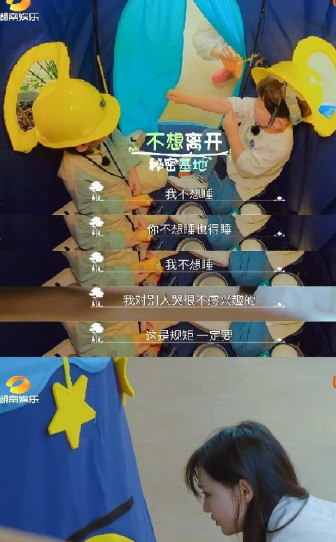They say a child’s face is like the weather in June, ever-changing. This is something that every mother deeply understands. One moment, the little one is all smiles like a blooming flower, the next moment, they are wailing as if their heart is being ripped apart!
When a child keeps crying, should we soothe them?
Recently, in a parenting variety show called “Wonderful Little Forest,” Zheng Shuang sparked a heated discussion among numerous netizens for opting for the “cold treatment” when dealing with a crying child!
Facing little Jiu, who refused to take a nap and was crying, Zheng Shuang sternly said:
After hearing Zheng Shuang’s words, Jiu’s resistance intensified, becoming increasingly upset.
People online discussed this matter fervently.
Children are angels, but sometimes these little angels can turn into little devils. When children cannot have their wishes fulfilled, they might resort to crying to manipulate their parents or act stubbornly. I believe many have witnessed children throwing tantrums on the floor of a shopping mall. Faced with such a situation, how would you handle it? Would you give in to the child’s demands or walk away? Different approaches bring different results.
The renowned American psychologist Daniel Siegel proposed a theory: the human brain is divided into two layers.
The upper layer is the rational layer, controlling behavior, emotions, rational thinking, and planning;
The lower layer is the emotional layer, responsible for instinctual behaviors (breathing, blinking, etc.) and emotional changes.
In children, the brain functions transition from the lower layer to the upper layer.
This explains why children experience significant emotional fluctuations when they are young, cry a lot, but cannot control their emotions. Similarly, due to their immature cognitive development, children cannot comprehend the reasoning adults present to them.
At 2-3 years old, the rebellious behaviors exhibited constitute the first rebellious phase in life, known as the “Baby Rebellion Phase”;
Around 7-9 years old, they enter the second rebellious phase in life, termed the “Childhood Rebellion Phase”;
Between 12-18 years old, they face the third rebellious phase in life, the most common being the “Youth Rebellion Phase.”
When a child throws a tantrum, it’s a way for them to release emotions. They simply don’t know how to control their emotions yet and are unaware that such behavior is inappropriate in public. Therefore, they cannot restrain their emotions. What a mother needs to do is patiently wait and observe the child’s behavior.
I recall Professor Li Meijin’s advice: when a child cries, take them to a room, grab a chair, sit facing them, and let them cry. When a child cries, they will open their eyes three times. The first time they see you watching them, they cry to show you. The second time they open their eyes and see you unmoved, they might think: “You’re still watching, why no reaction?” I’m tired of crying. The third time they open their eyes: “No reaction again? Fine, I won’t cry anymore.”
In the case of a child’s tantrum, the ultimate goal is to fulfill their desires by obtaining what they want. If a mother gives in at this point, such scenarios will occur more frequently in the future because if a child realizes that crying can satisfy their needs, they will continue to use this method since it always works. After all, who wouldn’t?


